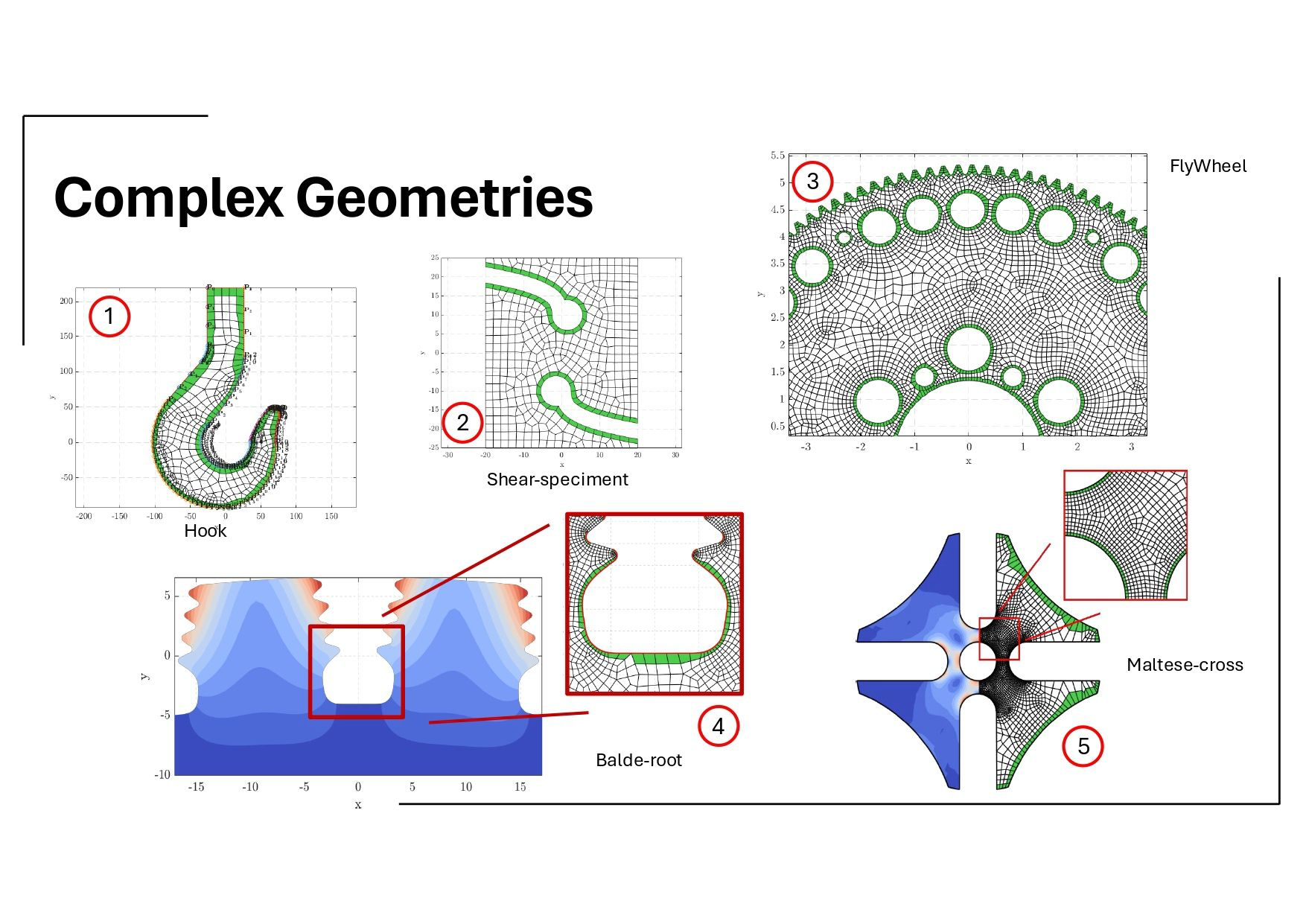The NURBS-enhanced finite element method (NEFEM)
I believe the NURBS-enhanced finite element method (NEFEM) has huge potential in streamlining the CAE workflow in complex applications. Unlike isogeometric analysis, which after 20 years of research has proven itself to be a niche technology, NEFEM can actually improve the results of any existing FEA model.
Why is NEFEM so powerful? Because it runs the analysis on the same geometry produced by CAD (B-rep) combined with an FEA mesh (V-rep). NEFEM does not over-promise to avoid meshing or avoid CAD cleaning, and that’s the beauty: NEFEM makes your FEA simulation more accurate and its resulting geometry can be exported back to CAD. If you are not a hands-on engineer, you may need more clarification on why this is a big thing, so you can always ask me.
What can you expect from NEFEM? When compared to FEA, NEFEM is 20-30% more accurate, without adding any setup, tool, or information to your model. For example, we can take any LS-Dyna input file and couple it with its CAD model (such as a STEP file) to produce more accurate results. While NEFEM is computationally more expensive than FEA, its overhead is negligible, particularly if you look at it from the the element-count perspective; another way to look at this is to measure how many cells you save with NEFEM to reach the same accuracy as FEA. In other words, NEFEM meets the FEA accuracy with 15% fewer elements. That’s a massive saving for a technology that has zero footprint on the user space.
Ask ChatGPT what NEFEM is: The NURBS-enhanced finite element method (NEFEM) is a numerical technique used in computational mechanics and engineering simulations. It combines two mathematical tools:
- Non-Uniform Rational B-Splines (NURBS)
- The Finite Element Method (FEM)
NEFEM aims to improve the accuracy and efficiency of standard FEM by incorporating NURBS geometry representation. Here’s a brief overview:
-
NURBS: These are mathematical models commonly used in computer-aided design (CAD) to represent curves and surfaces with high precision.
-
FEM: This is a widely used numerical method for solving partial differential equations in various engineering fields.
-
Enhancement: NEFEM uses NURBS to represent the geometry of the problem domain exactly, while still using standard finite element polynomial interpolation for the solution.
Key advantages of NEFEM include:
- Improved geometric accuracy, especially for curved boundaries
- Better handling of complex geometries
- Higher convergence rates
- More accurate results with fewer elements
NEFEM is particularly useful in applications where geometric precision is crucial, such as computational fluid dynamics, structural analysis, and electromagnetics.
Would you like me to elaborate on any specific aspect of NEFEM? … No thank you, but if you want to know more, please reach out to me directly.
Work published at ECCOMAS 2024
Together with Ruben Sevilla, from Swansea University, and Gian Maria Santi, from Bologna University, we published novel results on NEFEM. We have been working on this for years now and our goal is to design a technology that is applicable to most multi-physics verticals. If you have a complex geometry, we got you covered:

If you have tried to apply isogeometric analysis in real industrial problem, as this point you would want to return your LS-Dyna license. Don’t, LS-Dyna is the best solver I worked with and I have a lot of friends at Ansys :-). Still, if you were disappointed by all
ELEMENT_SOLID_NURBSand other keywords, I know your pain, and NEFEM is designed to solve that.
At ECCOMAS we shared new results about the applicability and robustness of our method: we demonstrated how we can handle complex geometries imported directly from CAD. We may be guilty of providing academically simple examples, but these examples are truly representative of commercial applications. Having worked for Ansys, I can confidently say that if NEFEM was implemented under the hood for each model that has a CAD geometry and a (solid) mesh, customers would get better results for free.
Downlaod the slides
What’s next?
As we keep on developing NEFEM, we are open for collaborators, developers, early-adopters, students, funds but also comments and critics. Just drop me a line if you have any idea that you want to share.